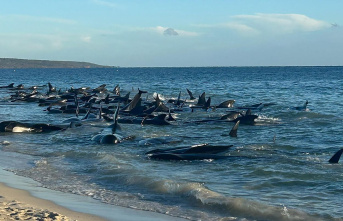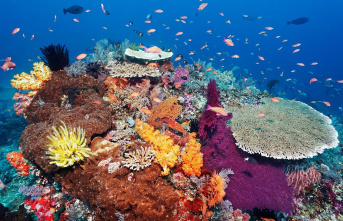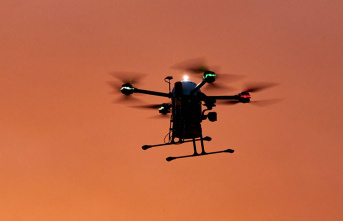Hiking alone or with friends and a backpack for days through hills in the Himalayas in Nepal: That was yesterday. Since April 1, tourists are only allowed to trek and enjoy the mountain panorama with a local mountain guide or porters from a government-registered trekking company. The Nepal Tourism Board, an organization made up of representatives of the government and the tourism industry, recently decided so. Their justification: improve the safety of trekkers and create jobs for locals.
Climbing mountains alone - this is now only possible on the highest mountains in Nepal for mountaineers who, unlike trekkers, are on the move with more complex equipment such as ice axes, crampons, ropes, ladders and sometimes oxygen bottles. Different rules apply on these high mountains, such as the world's highest mountain, the 8849 meter high Mount Everest, or seven other eight-thousanders.
It's about security and jobs
Commenting on the new trekker rule, a Tourism Board spokesman said the presence of a local guide helps ensure trekkers are rescued more quickly in an emergency. Many trekking routes in the Himalayas are difficult to access - with no road access, means of communication or human settlements nearby. A rescue can take hours or even days.
The police said they were aware of around seven to eight hikers missing in the Himalayas a year - at least that was the case in normal times before the restrictions of the corona pandemic. The missing person reports come from families, friends or embassies. However, the police inspector assumes that there will be more cases per year because some cases would also be registered with other authorities. The Tourism Board estimates that there must be 40 to 50 missing people a year. But no one has exact numbers.
Why are trekkers disappearing in the Himalayas? The President of the Nepal Association of Trekking Agencies Nilhari Bastola said: "The majority of individuals who have died or disappeared while trekking are those who walked alone without a mountain guide and without understanding of the terrain. These tragedies would have happened with a local mountain guide can be prevented."
Possible dangers for trekkers
The Tourism Board, the police and trekking agencies list the dangers: trekking routes are often remote and sometimes difficult, there are wild animals such as tigers, bears, leopards and wolves in the areas - and there could also be criminals. It is not always clear how or why trekkers disappear. In higher areas, some also suffered from altitude sickness or became disoriented in the face of heavy snowfall.
With the new rule, many in Nepal are now hoping for more job opportunities for thousands of mountain guides and porters who have suffered badly from the global tourism slump in connection with the corona pandemic. The average income in the country is less than 150 euros per month.
But not everyone likes the rule. The daily Kathmandu Post wrote in an editorial: "Many solo travelers love to explore the country at their own pace and in their own way. If they have to hire a mountain guide, the experience may not be such an adventure." Nepal has also established itself as a cheap adventure destination - and now it's getting more expensive.
40,000 euros for climbing Mount Everest
For certain adventure seekers, however, Nepal was expensive even before that. Those who want to climb the top of Mount Everest often pay around 40,000 euros for it, as US mountaineer and blogger Alan Arnette calculated. This includes a fee for a climbing permit from the Ministry of Tourism, which costs 11,000 dollars in the spring peak season, i.e. around 10,000 euros. There is also equipment, oxygen tanks, domestic flights, food and a local support team to guide the route, carry luggage and cook.
Also on the high snowy mountains sometimes people disappear. There, their chance of survival is usually significantly lower than for trekkers at lower altitudes - especially if they are not rescued very quickly, says mountaineer and Himalayan expert Khimlal Gautam. If you disappear into the so-called death zone at over 8,000 meters, where the human body breaks down and cannot recover, the chance of survival after a few hours or days is zero. There are also risks such as crevasses, avalanches, falling chunks of ice, freezing and altitude sickness.
Better chances of reaching the summit
However, Gautam emphasizes that mountaineering has recently become easier. This is also confirmed by a study on Mount Everest published in the journal "PLOS One" in 2020. Anyone who wants to climb it for the first time in the main season has twice as high a chance of success today as they did about 20 years ago. At the same time, the death rate remained almost unchanged.
According to co-author Raymond Huey from the University of Washington, possible reasons for this include better weather forecasts, which made it possible to find good time windows for the summit push. In addition, mountaineers used more oxygen bottles - even at lower altitudes. Furthermore, there are more and more anchored ropes on the common routes. And also the greater experience of the local helper teams help.
Himalaya Mountains Fees Article Kathmandu Post Everest Study











